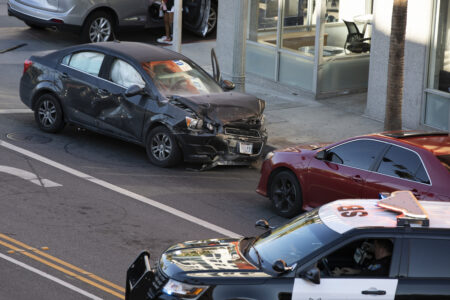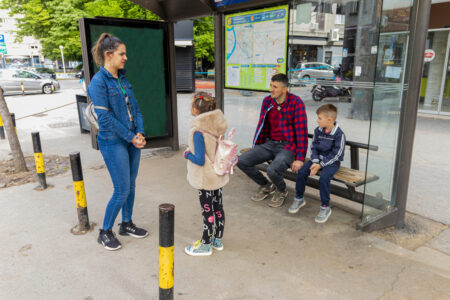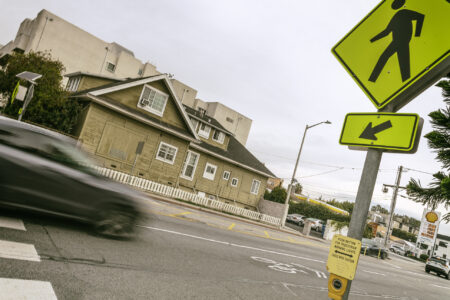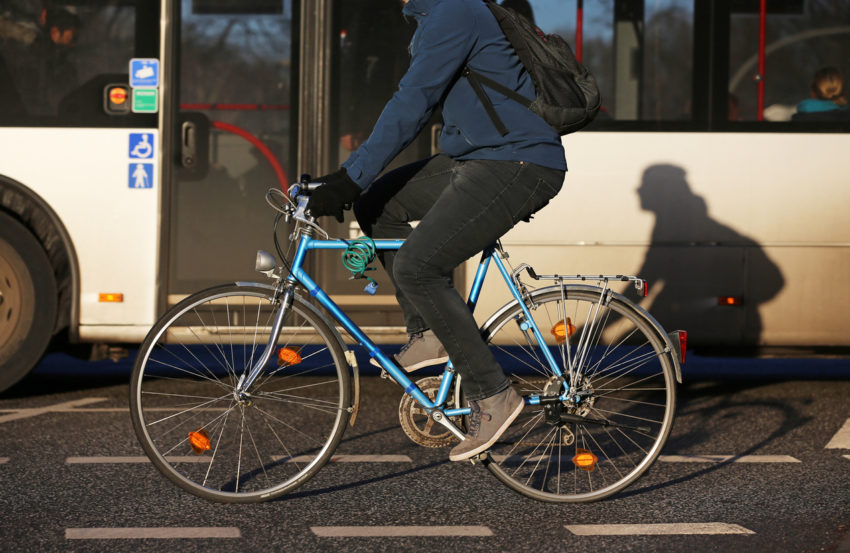
Share On Social!
The Regional Models of Cooperation program hosted a peer exchange workshop to share best practices in working across jurisdictions to improve connections between bicycle and pedestrian facilities and transit.
Participants of the October 2016 workshop released the Regional Cooperation and Bike/Ped and Transit Connections report summarizing the presentations, key themes, and recommendations.
In this report, they identified 10 key strategies that agencies can employ to improve connections between bicycle, pedestrian, and transit infrastructure.
1. Recognize that Improvement is Everyone’s Job
Improving bicycle and pedestrian and transit networks is a shared responsibility, spanning geographies and agency types from the state to regional and local levels.
For example, to identify gaps, Utah’s transportation planning agencies created a single map of all the alternative transportation networks in the State.
The Mid-America Regional Council (MARC) identified “mobility hubs” needing bolstered connections between fixed route transit, on-demand services, and bicycle and pedestrian facilities.
2. Lead from the Top
Direction and support from agency leadership is key to bringing bicycle and pedestrian facilities to the forefront of transit and transportation planning efforts.
By elevating awareness across the entire agency, leadership can ensure that all staff knows about the importance and value of supporting transit, walking, and biking.
3. Remember that What gets Measured gets Done
Performance measures provide a framework for agencies to pursue projects that support connecting bicycle and pedestrian facilities to transit and to assess progress.
For example, MARC mapped where new jobs occurred, the level of access to transit in the region, and where more transit-dependent populations lived to illustrate the need for expanding transit in particular areas.
4. Promote Diverse Benefits
Strengthening connections between bicycle and pedestrian facilities and transit positively impact economic development, health, social equity, air quality, and various other local issues.
Understanding these benefits and how they motivate different stakeholders or speak to different communities’ values can help agencies build support for projects.
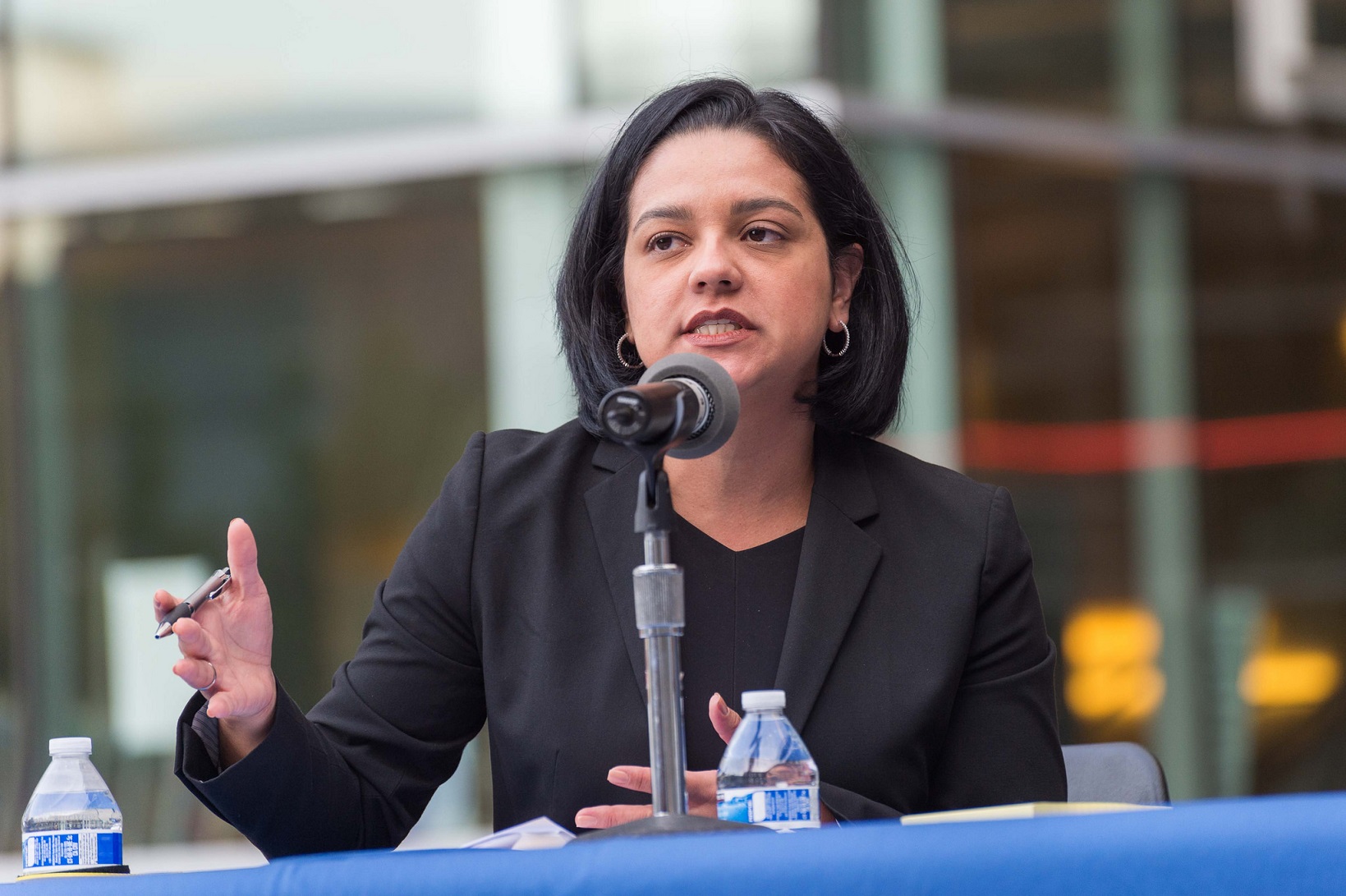
5. Prioritize Equity
Prioritizing equity when developing a bicycle and pedestrian network is key to developing a transportation system that serves all communities.
Vulnerable populations often do not have access to safe, connected bicycle and pedestrian facilities and face higher rates of pedestrian fatalities. Vulnerable populations are also unable to access bike share programs regularly.
The Los Angeles County Metropolitan Transportation Authority (LA Metro), for example, is developing a TAP card that customers can use across the transit and bike share system using cash. The card will provide discounted fares for senior citizens, low-income groups, and other groups.
The agency is also targeting low-income populations and communities of color with outreach and education materials about the system.
6. Redefine Transit
Defining active and alternative transportation networks as transit networks, rather than as recreational facilities, can create stronger, more efficient outcomes for all users, and can help increase the funding available for improvements.
In sprawling, low-density Kansas City, for example, the Kansas City Area Transportation Authority (KCATA) launched a pilot program using 14-passenger van on semi-fixed routes.
Agencies can present the benefits of bicycle and pedestrian network expansion in the context of expanding the transit network.
The more decision makers view bicycle and pedestrian networks as key assets of transit networks, the more they will see the value in making investments to expand bicycle and pedestrian facilities. In fact, LA Metro treats the planning and operations of its bike share system the same way it would a bus or rail system.
7. Account for Incubation Periods
Establishing strong working relationships across agencies does not happen overnight.
Allowing for an incubation period in which stakeholders can set the stage for collaboration and learn about each other’s needs and priorities before applying for a large grant or conducting a large project will benefit the process in the long run.
To build relationships, the Utah Department of Transportation (UDOT) and its partners invite stakeholders on tours and to events that showcase successful pedestrian and bicycle initiatives. Allowing relationships and projects to build over time results in robust, more reliable outcomes
8. Bundle Needs and Broaden Funding
Identifying projects that can be combined and implemented across a network or region can help build regional support, since more local constituents are involved and have a sense of ownership.
In Kansas City, MARC and KCATA created a new committee responsible for apportioning Surface Transportation Program funds for regional transit, which was composed of local government officials for areas with access to transit.
Two Salt Lake City MPOs and UDOT combined more than 300 projects related to the bicycle and pedestrian and transit network in the Salt Lake City region in their TIGER grant application. The application shows how together these projects will create a comprehensive, connected network for bicyclists, pedestrians, and transit riders, thus multiplying the benefits of any single project by expanding the reach of the network.
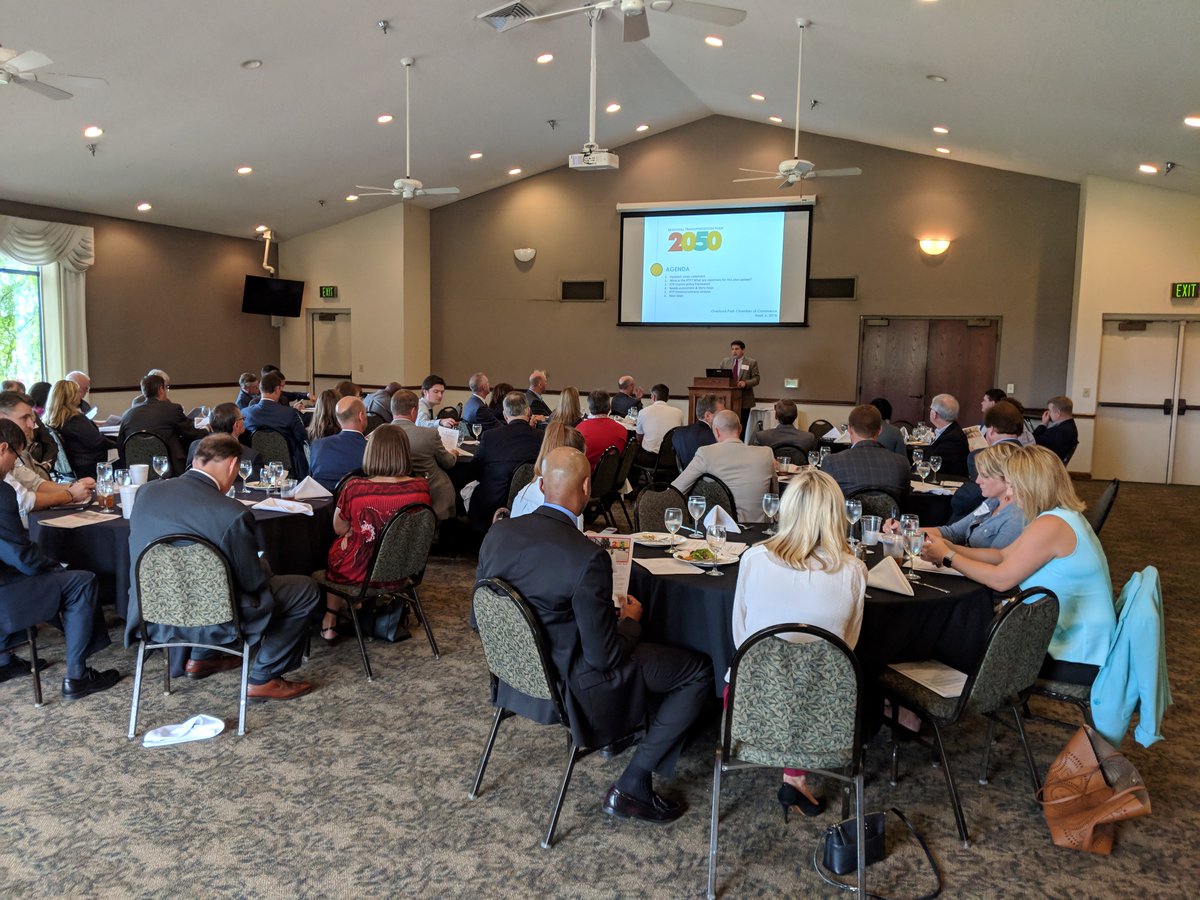
9. Identify Project Champions
Large grant applications, projects, and initiatives benefit from a “project champion” who leads the effort and ensures that it continues to move forward.
Such leadership is important at the regional, state, and local levels.
10. Tap into Local Priorities
Pursuing projects based on local priorities and in partnership with supportive local agencies better ensures local support for projects.
Additionally, providing local communities with technical assistance to help understand their needs and conditions is an important step in helping communities identify and prioritize project lists.
Share this report with pedestrian, bicycle and transit planners and advocates in your community.
Because pedestrian, bicycle and transit improvements go hand-in-hand with social and environmental justice, check out the Regional Cooperation and Environmental Justice in Transportation Planning in Ohio report.
The Regional Models of Cooperation program hosted a peer exchange workshop to share best practices in the incorporation of environmental justice into transportation planning and to determine how models of regional cooperation can inform this process.
The following four themes emerged:
- Conduct data analyses addressing needs specific to environmental justice and Title VI populations.
- Build relationships with environmental justice and Title VI communities.
- Create plans and communications that reach broad, diverse audiences.
- Increase consistency of analysis across planning phases and share data.
The Federal Highway Administration (FHWA) invited the following individuals to present at the October 2016 workshop:
- Laura Cornejo, Deputy Executive Officer of Active Transportation Los Angeles County Metropolitan Transportation Authority (LA Metro)
- G. J. LaBonty, Program Development Manager, and Jen McGrath, Active Transportation Planner Utah Transit Authority (UTA)
- Martin Rivarola, Assistant Director of Transportation and Land Use Mid-America Regional Council (MARC)
Share this report with social and environmental justice advocates in your community.
Regional Models of Cooperation is a program of the FHWA Every Day Counts 3 (EDC-3) initiative, co-led by the FHWA Office of Planning and the Federal Transit Administration (FTA) Office of Planning.
Explore More:
Transportation & MobilityBy The Numbers
27
percent
of Latinos rely on public transit (compared to 14% of whites).

